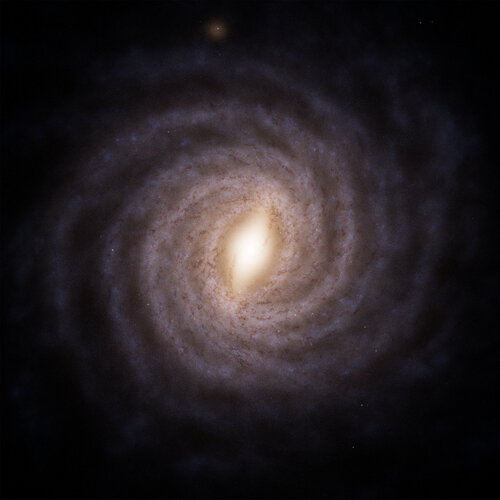Warning! More ground-breaking science ahead

The Gaia scientific and engineering teams are already working full steam on the preparations for Gaia Data Release 4 (DR4), expected in 2026. The data volume and quality improves with every release and Gaia DR4, with an expected 500 TB of data products, is no exception. Furthermore, it will cover the mission’s first 5.5 years, corresponding to the length of the originally foreseen duration of the mission.
“This is the Gaia release the community has been waiting for, and it’s exciting to think this only covers half of the collected data,” says Antonella Vallenari, Deputy Chair of DPAC based at the Istituto Nazionale di Astrofisica (INAF), Astronomical Observatory of Padua, Italy. “Even though the mission has now stopped collecting data, it will be business as usual for us for many years to come as we make these incredible datasets ready for use.”
Gaia Data Release 4 is set to expand its binary star catalogue, the largest such catalogue to date. Gaia has a unique ability to tease out the tiny motions of pairs of celestial objects orbiting close to each other, and has already spotted previously hidden companions around bright stars.
Incidentally, Gaia’s last targeted observation, on 10 January, was of binary pair 61 Cygni. This iconic star attracted the attention of 19th-century astronomers to yield some of the first proper motion and parallax measurements, techniques used by Gaia on some two billion stars.
Gaia’s exoplanet discoveries are also set to increase with the forthcoming datasets thanks to the longer timeframe of observations making it much easier to spot ‘wobbling’ stars gently tugged by orbiting planets.
“Over the next months we will continue to downlink every last drop of data from Gaia, and at the same time the processing teams will ramp up their preparations for the fifth and final major data release at the end of this decade, covering the full 10.5 years of mission data,” says Rocio Guerra, Gaia Science Operations Team Leader based at ESA’s European Space Astronomy Centre (ESAC) near Madrid in Spain.
“This will conclude an incredible coordinated effort between hundreds of experts across the science operations centre here at ESAC, the mission operations team flying Gaia from ESA’s European Space Operations Centre in Germany, and the huge consortium of data processing specialists, who have together ensured the smooth running of this beautiful mission for so long.”



